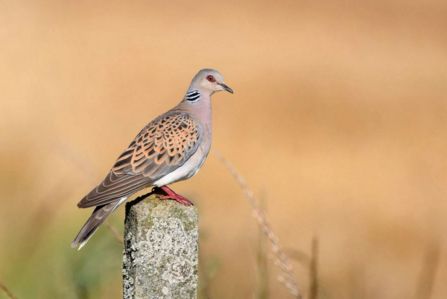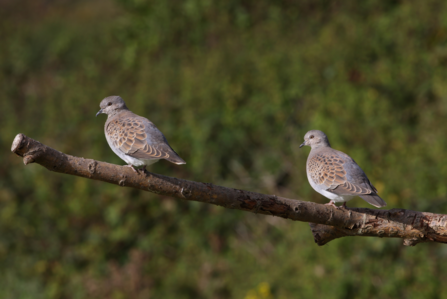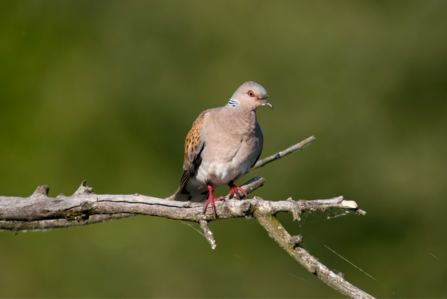The return of the Turtle Dove directly contributes to the Wilder 2030 goals of restoring nature-rich spaces, supporting reintroductions of iconic species, and working with communities and landowners to lead nature recovery in their own neighbourhoods. But what makes Turtle Doves so special, and why should we care about their return to Derbyshire?
The Turtle Dove (Streptopelia turtur) is a delicate, pretty bird that looks a little more exotic than your average pigeon; it’s adorned with salmon-grey plumage on its chest, mottled, ochre-fringed feathers on its wings, and eyes the colour of a blazing orange sunset. Like the Cuckoo and the Swift, these birds are emblems of summer, and people would associate their gentle ‘tur-turring’ calls with the arrival of the season; it was their unique call that earned them their name.
Turtle Doves have an important place in many European cultures as a symbol of love and fidelity, because they pair for life and raise their young together each year. Yet despite these associations, and even though they are still famously featured as a pair in the 12 Days of Christmas carol, very few people in the late 20th and early 21st centuries have ever seen this elegant bird.



